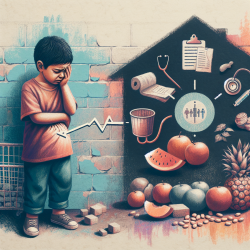As a practitioner working with children, understanding the multifaceted causes of chronic pain is crucial. Recent research has shed light on an unexpected contributor: household food insufficiency. This blog explores the findings of a national study on the prevalence of chronic pain among children in relation to their household's food sufficiency status. The insights gained from this study can guide practitioners in improving their approach to managing pediatric chronic pain.
The Research Findings
The study titled "Household Food Insufficiency and Chronic Pain among Children in the US: A National Study" analyzed data from the 2019–2020 National Survey of Children’s Health, involving 48,410 children aged 6-17 years. The researchers found that food insufficiency significantly correlates with higher rates of chronic pain in children. Specifically, 13.7% of children experiencing mild food insufficiency and 20.6% with moderate/severe insufficiency reported chronic pain, compared to just 6.7% of children from food-sufficient households.
Understanding the Impact
This study highlights a critical dose-response relationship between food insufficiency and childhood chronic pain. The odds of experiencing chronic pain were 1.6 times higher for children with mild food insufficiency and 1.9 times higher for those with moderate/severe insufficiency. This suggests that as the severity of food insufficiency increases, so does the risk of chronic pain.
Implications for Practitioners
For practitioners, these findings underscore the importance of considering social determinants like food sufficiency when assessing and treating chronic pain in children. Here are some actionable steps:
- Screening for Food Insecurity: Implement routine screening for food insecurity during healthcare visits using validated tools like the two-item screening tool by Hager et al.
- Collaborating with Community Programs: Partner with local and national programs such as SNAP to connect families with resources that can alleviate food insecurity.
- Holistic Treatment Plans: Develop comprehensive treatment plans that address both medical needs and social factors affecting health.
The Need for Further Research
The study calls for further research to explore the underlying mechanisms linking food insufficiency to chronic pain and to evaluate interventions aimed at mitigating these effects. Understanding these pathways will help refine treatment strategies and improve outcomes for affected children.
Household Food Insufficiency and Chronic Pain among Children in the US: A National Study










